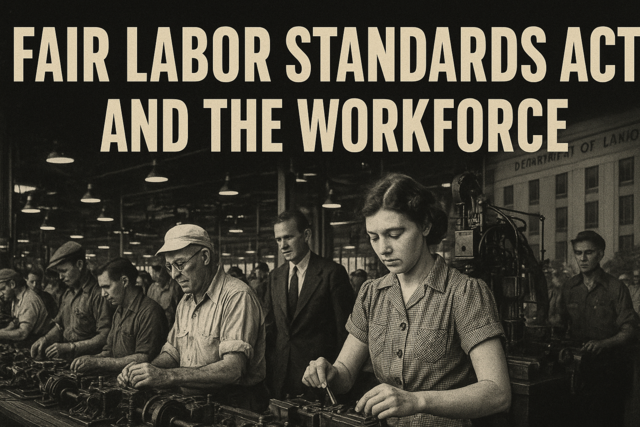Life insurance is put into place to protect the finances of families in the event of a loved one passing away. There are a few different types of life insurance to choose from. Over the years, life insurance has evolved and is used for other reasons such as wealth preservation and estate tax planning. (Pareto, 2014) If there is anyone who depends on you for income, then you will more than likely need to look at purchasing a life insurance policy. There are many ways in which to choose the way you want your life insurance policy to pay out, dependent upon one's individual circumstances. The next section discusses the three most popular types of life insurance.
Types of life insurance
Term life insurance. Term life insurance is coverage that lasts for a certain time period. The most common length of time for this type of coverage is thirty (30) years. This particular life insurance normally has a small premium payment and insures against a loss of life. Most of the time, these policies are renewable. (Duke University, 2014)
Whole life insurance. Whole life insurance is also commonly known as permanent life insurance. When premium payments are made on time, this particular type of insurance is good for the entire life of the insured. This insurance is usually very expensive to keep up with.
Universal life insurance. Universal life insurance is also commonly known as a flexible premium or adjustable life. (Pareto, 2014) The cash value of this particular type of life insurance is based off the short term interest rates. This type of policy usually works well if you are looking to build your financial portfolio, and many financial planners may suggest this.
There are both pros and cons to every type of life insurance policy, so it is important to research and speak with an insurance agent to find out which type is best for you.
How life insurance works
Life insurance should be a part of anyone's financial planning. If the head of household passes away, this coverage would pay monies out to the family to help cover expenses. Life insurance protects the income of families. This type of coverage will assist with paying debts after death, leaving an income for your family, paying for funeral expenses, and much more.
It is essential for anyone who has people who depend on them for money to ensure there is a life insurance policy in place. This is true for surviving spouses, children, or even an employer, if you are a key person in someone else's business or a business owner. Basically, if there is anyone who relies on you for income, it is a good idea to look into life insurance if you don't already have coverage.
The proceeds from the life insurance policy will be given to the beneficiary of choice, which normally are the surviving spouse and/or children. The beneficiary can be any person you want it to be, and it can even be more than one person. In some scenarios, people leave money to a charity. It is a personal choice.
How much life insurance should you get?
Keep in mind that whether or not you should have life insurance depends on one's circumstances. Everyone is different, and every family is different. Life insurance is a very personal decision that should be made on a case by case analysis.
When comparing the different types of life insurance, you will see that term life insurance is the most economical and whole life insurance is one of the most expensive. Be sure to speak with an insurance agent that you trust to ensure you aren't being sold too much, or not the right type of coverage.
Important things to know
When it comes to purchasing a life insurance policy there are many things to keep in mind other than the amount of life insurance to buy. For instance, it is important to look at the tax treatment. Even though the proceeds from the policy are not taxable to the beneficiaries, in some cases, there may be some tax treatment as part of the estate. (Pareto, 2014) This all depends on what type of life insurance you choose, as well as one's individual circumstances.
When choosing a beneficiary, keep in mind that you will choose a primary beneficiary as well as a contingent beneficiary. This means that is the primary beneficiary passes away as well, then the proceeds of the life insurance policy will be given to the contingent beneficiary. A common example of this is having the surviving spouse as the primary beneficiary and the surviving children listed under the contingent beneficiaries.
Each time someone goes through a life changing event such as a marriage, new child or divorce, it is important to look at the life insurance in place to see if any adjustments need to be made.
Common terminology
-
Term life insurance � This is the most popular form of life insurance. This coverage doesn't have a cash value and it has a maximum term period, which is most commonly thirty (30) years.
-
Whole life insurance � This type of life insurance is also known as permanent coverage because the policy will last the entire life of the insured.
-
Universal life insurance � This type of insurance is also known as adjustable life insurance. It is a permanent insurance policy, but its cash value is based on current interest rates.
-
Group life insurance � This type of insurance is provided by a group, such as employer or financial institution, where many people are on the same plan. This allows for cheaper premiums and is an excellent benefit for employers to have for their employees.
-
Beneficiary � A beneficiary is the person who is listed in the contract to receive the funds from the insurance policy, which is usually the surviving spouse and/or children.
-
Cash value - This is the policy owner's interest in the policy. It is the amount of money the life insurance is worth.
-
Face amount � This is the amount of the death benefit that is payable under the life insurance policy.
Conclusion
Gap Insurance
Gap insurance, which is short for Guaranteed Auto Protection, is one of those insurance options that have both positives and negatives. This is also known as bridge insurance. Many people believe this type of insurance is unnecessary, but you will learn in this section that there are definitely times in which it is a good idea to have this coverage in place. This type of insurance is one of the most confusing because there are a lot of misconceptions when it comes to gap insurance.
What is gap insurance?
One of the biggest misconceptions with gap insurance is that consumers think that gap insurance is a catch-all policy that makes their car payments whenever they are needed; however, this is definitely not the case. (Gusner, 2011)
What gap insurance does do: in the event of a total loss, it pays the difference between what you owe on the car and what it is worth. That is the one and only thing that gap insurance does. The amount of the claim will be dependent on what the adjuster at the insurance company thinks it is based on the life of the car.
Gap insurance may not be necessary if you did not put a large down payment and had all the taxes and fees rolled over into your loan then chances are good that you are upside down on your auto loan � meaning that you owe more for the car than what it is worth.
Example
You buy a car for $20,000 that includes taxes and fees, and make a down payment of $1,000 .
A few months later, you are involved in a car accident and it is totaled out. Once you file a claim with your insurance company, you find out that the cash value of your car is$15,000 . Once your $500 deductible is met, the insurance company will pay $10,000 to your lienholder.
This means that you still owe $4,000 to the lienholder. The gap insurance would kick in and pay the amount you owe in order to pay off the loan. Depending on your individual plan, the gap insurance may also include your $500 deductible.
So, in this case study, gap insurance was an excellent choice to have because if you had to pay out of pocket for all of the expenses, on top of having to purchase a new car, it would take a huge chunk out of your finances. Not only that, but most people do not have that amount of money at their disposal for circumstances such as these.
Other types of gap insurance
Believe it or not, gap insurance is not only for autos. In fact, there is also medical gap insurance. This special type of coverage can help pay for expenses such as deductibles, co-payments and co-insurance. This is a great option for supplementing your medical insurance. Studies have shown that 24% of households in the U.S. have trouble paying medical bills, even with health insurance. (First Financial Groups of America, 2014)
Conclusion

























